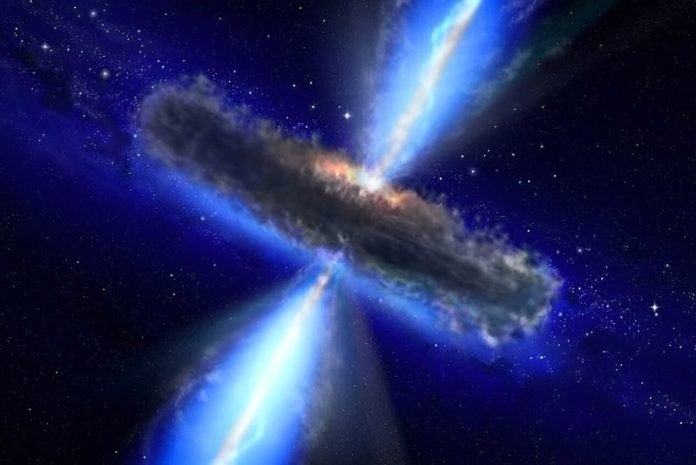
Did you know that at the center of every galaxy, including our own Milky Way, there’s a supermassive black hole?
These aren’t just any black holes; some are incredibly active and grow rapidly, gobbling up everything around them.
These special black holes are called Active Galactic Nuclei (AGN).
Scientists thought there were a lot of these super-charged black holes, but new research has revealed something surprising: there might be fewer of them than we initially thought.
What was the study about?
Allison Kirkpatrick, an assistant professor of physics & astronomy at the University of Kansas, led a team that used the powerful James Webb Space Telescope (JWST) to look at a specific area in the sky between the Ursa Major and Boötes constellations.
They were trying to see how galaxies looked 7 to 10 billion years ago, during the time when stars were forming at their peak.
One of their main goals was to find these special black holes, the AGN, in the centers of these ancient galaxies.
What did they find?
They expected to find many AGNs because JWST is much more powerful than the older Spitzer Space Telescope used in previous studies.
But they were in for a surprise. Despite JWST’s advanced technology, they found fewer AGNs than anticipated.
This means that these kinds of rapidly growing black holes are rarer than scientists had previously thought. It also hints that our universe might be a bit more stable than we believed.
Why is this important?
Understanding these black holes is crucial for many reasons. For one, they can influence how their home galaxies grow and change over time.
The study shows that these black holes might be growing slower than we thought.
This is a big deal because it changes how scientists think about the growth of galaxies, including our Milky Way.
Another interesting thing they found was less dust in these ancient galaxies than expected. Dust in galaxies can hide star formation and black holes, making them hard to study.
So, the lack of dust in these galaxies could mean that these black holes weren’t as active as those in dustier, more massive galaxies.
What comes next?
This research opens up new questions about the nature of black holes and how they grow. For example, if there are fewer active black holes than thought, what does that mean for our understanding of the universe?
It’s an exciting time for Kirkpatrick and her team as they’ve earned more time on the JWST for future studies. They plan to survey around 5,000 galaxies next year to dive deeper into this fascinating subject.
So, the next time you look up at the night sky and think about the mysteries of the universe, remember that scientists are continually making discoveries that challenge what we know.
Who knows what they’ll find next?
Follow us on Twitter for more articles about this topic.



